When it comes to acrylic painting techniques, versatility is the word. These awesome paints can do just about anything you want a paint to do, from being their own beautiful selves to mimicking watercolors and oils, and even inching into sculpture territory.
You’ll see acrylic paint used in everything from the cutie-cutest craft project to the most high-end artworks that sell for tens of thousands of dollars.
Its versatility makes it hard to pin down, so I’m going to dedicate this post to easy acrylic painting ideas that anyone can have success with.
I really want you to see how you can have fun with acrylics – and then take it further and keep experimenting with your favorite techniques.
Why Use Acrylic Paints?
Acrylics are: Convenient, kid-friendly, safer than oil paints, easily mixable, clean up with water, and dry quickly.
Throw in a few gel mediums or other supplies to the mix and you can push acrylics in even more directions. I’ll touch on some of my favorite acrylic painting techniques below, and you can get on to the fun business of experimenting on your own.
It’s easy to pick up a set of acrylics and get started. Scroll down for my list recommended products no matter where you are in this process. Also, this group of techniques focuses more on playing with the medium as opposed to achieving any specific style or finished product.
Be sure to scroll to the very bottom if you’re looking for more acrylic painting ideas and inspiration, as I’ve included some beautiful works.
Supplies I Used
Here are all the supplies I used in these acrylic technique experiments. Grab them all and follow along, or pick and choose according to the techniques you find most interesting.
- Heavy Body Acrylic paints
- Fluid acrylic paints
- Acrylic gel mediums
- Ink
- Old book pages
- Printmaking paper
- Small canvas panels
- Wood boards
- Pre-cut printmaking paper
- Bristol paper
- Gesso
- Stencils
- Small bottles with drawing nibs
- Freezer paper
- Paintbrushes
- Palette knives
- Color mixing charts
- Scraper
Acrylic Supplies For Beginners
If you are just starting out with acrylics. or want to buy some starter supplies for your kids, here’s what I recommend you buy.
- A small mixing set of Heavy body acrylics
- One gel medium- matte or gloss
- 3 brushes
- Freezer paper
- A stack of canvas boards
- Heavyweight paper
Seriously, that’s it. If you/they like what you can do with this, you’ll want to add in more paint colors, mediums, and other fun items.
Acrylic Painting Techniques
Let’s dive into them. And these are only some of the ways you can use them. You could seriously come up with about a billion acrylic painting techniques if you kept at it.
Stenciling With Acrylics
You can use acrylic paints with stencils in lots of cool ways. I experimented with stencils on paper, but you can try painting with stencils over already-painted areas, or even pressing into wet acrylic paint to add texture.
These stencils are layered, and luckily acrylic dries so quickly that by the time you’ve rinsed off your stencil and dried it, you can usually do the second layer right away.
Repositionable spray adhesive are perfect to prevent bleeding if you’re stenciling on paper. I have not used them over paints, but I imagine if there is any texture on the paint, they won’t work as well. Use a makeup sponge to dab the paint on, and a few light layers are better than 1 heavy, goopy layer. (You can see I got a little goopy with the small turquoise dots – I should have done 2-3 lighter layers.)
Blue diamonds were done with mixing up the blue, then mixing part of it with white. I dabbed the darker to begin with, the lighter at the bottom, then mixed them in the center, right on the stencil. Watch the video for how I did this.

Acrylic Washes and Glazes
Acrylic is fantastic thinned out- either with water or an acrylic gel. Gels up to a point won’t dilute the color of the paint, while water will give you more of a watercolor effect with acrylics.
This triangle painting is made by mixing fluid acrylics with some gloss medium and painting in inked lines. (I use this ink bc it is truly waterproof when dry.)

I used a mixture of water and gel with fluid acrylics for this quick plaid design, which worked pretty well, but there is an actual glazing medium you can buy that most likely gives a lovely finish.
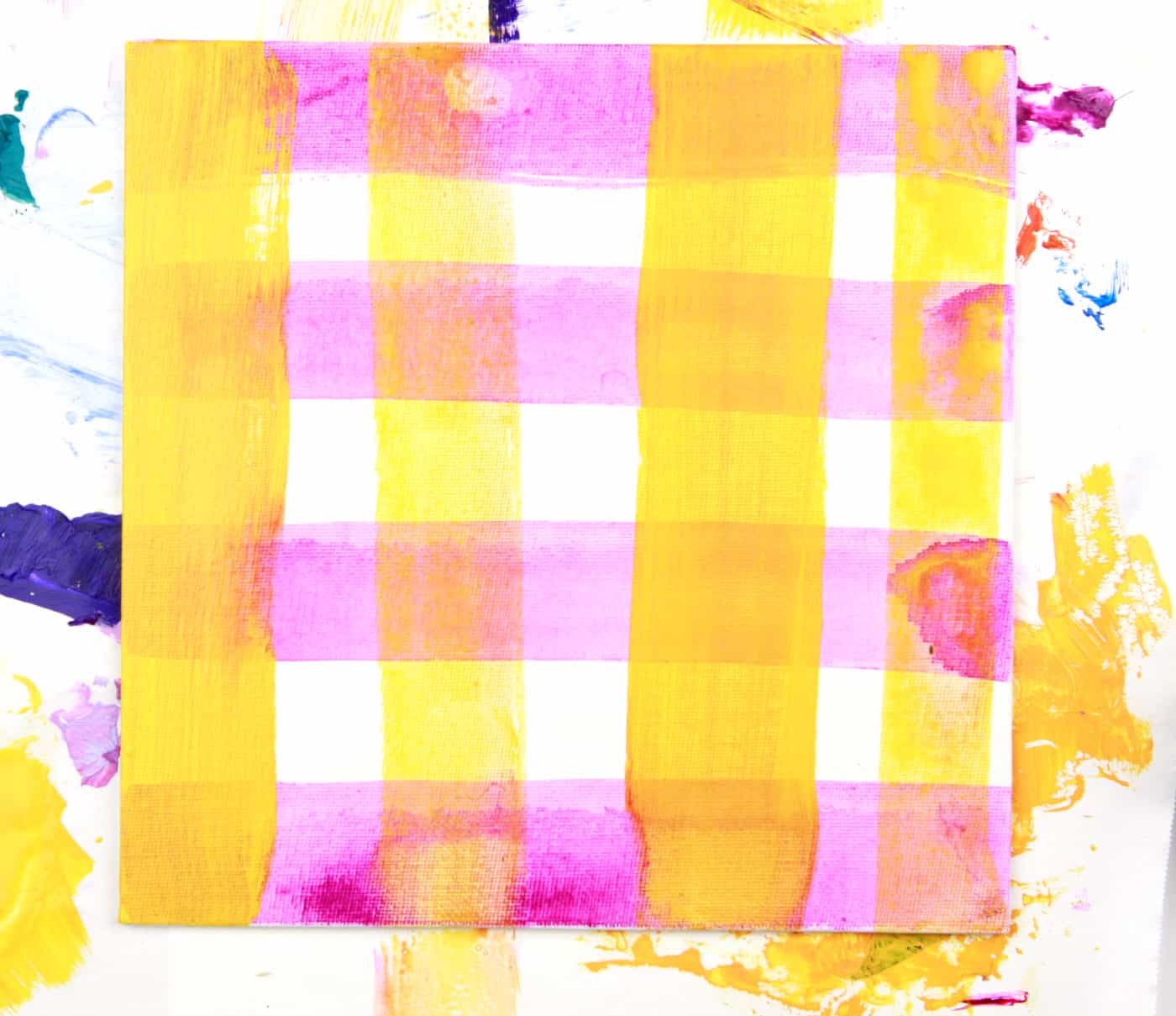
Paint over old book pages to use in art journals or collages- it’s hard to see a difference in the finish here, but the top page is paint mixed with gesso, which gives a more chalky finish. The bottom page is Unbleached Titanium mixed with matte medium. Both are brushed on thinly so you can still see the type underneath.

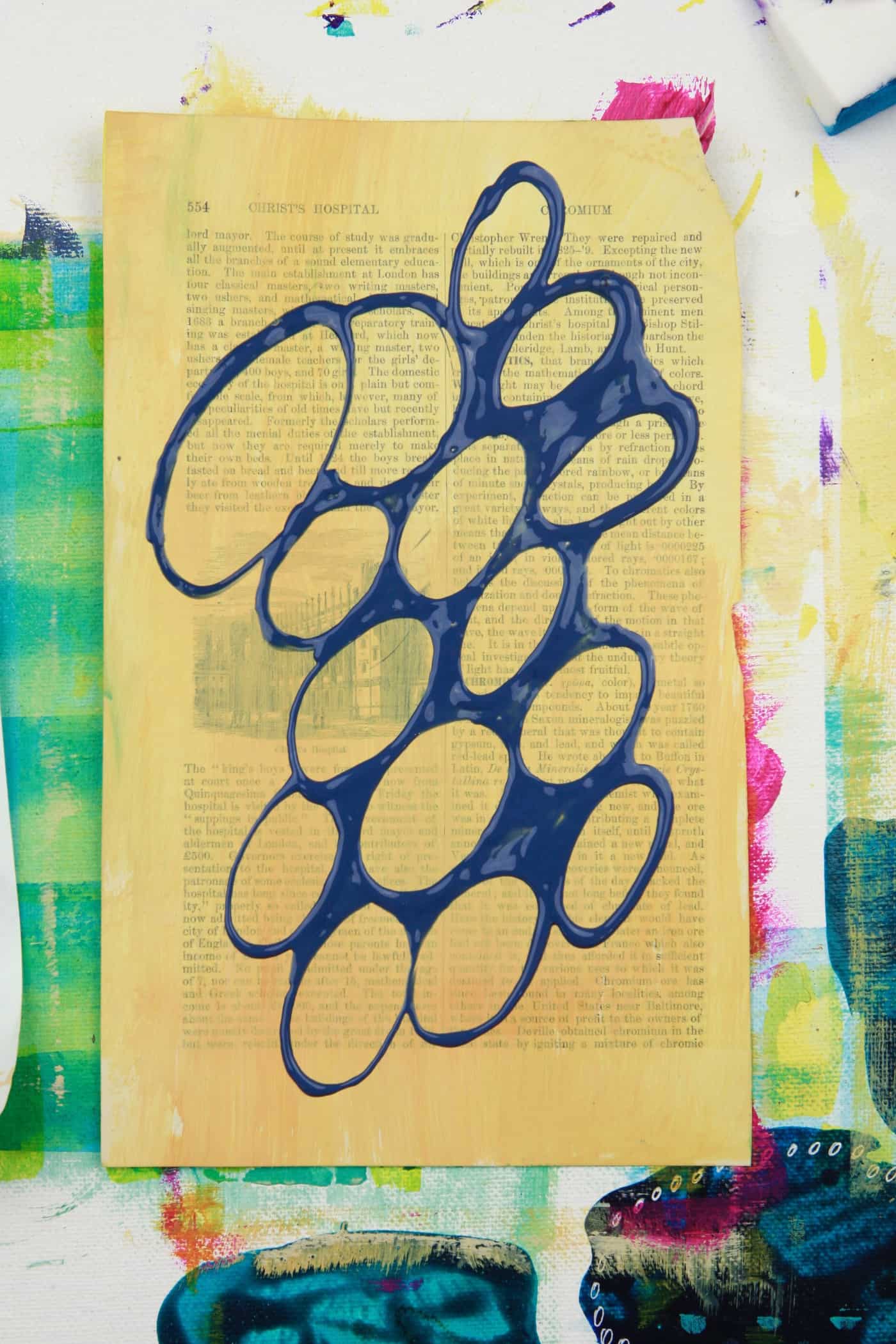
Wanna know what I drew that with? Huh? Wanna wannawannawanna? Okay, I mixed fluid Payne’s Grey, that luscious of greys, with Gloss Fluid Medium in a little squeeze bottle with a point. These bottles have changed my life. They’re everything.
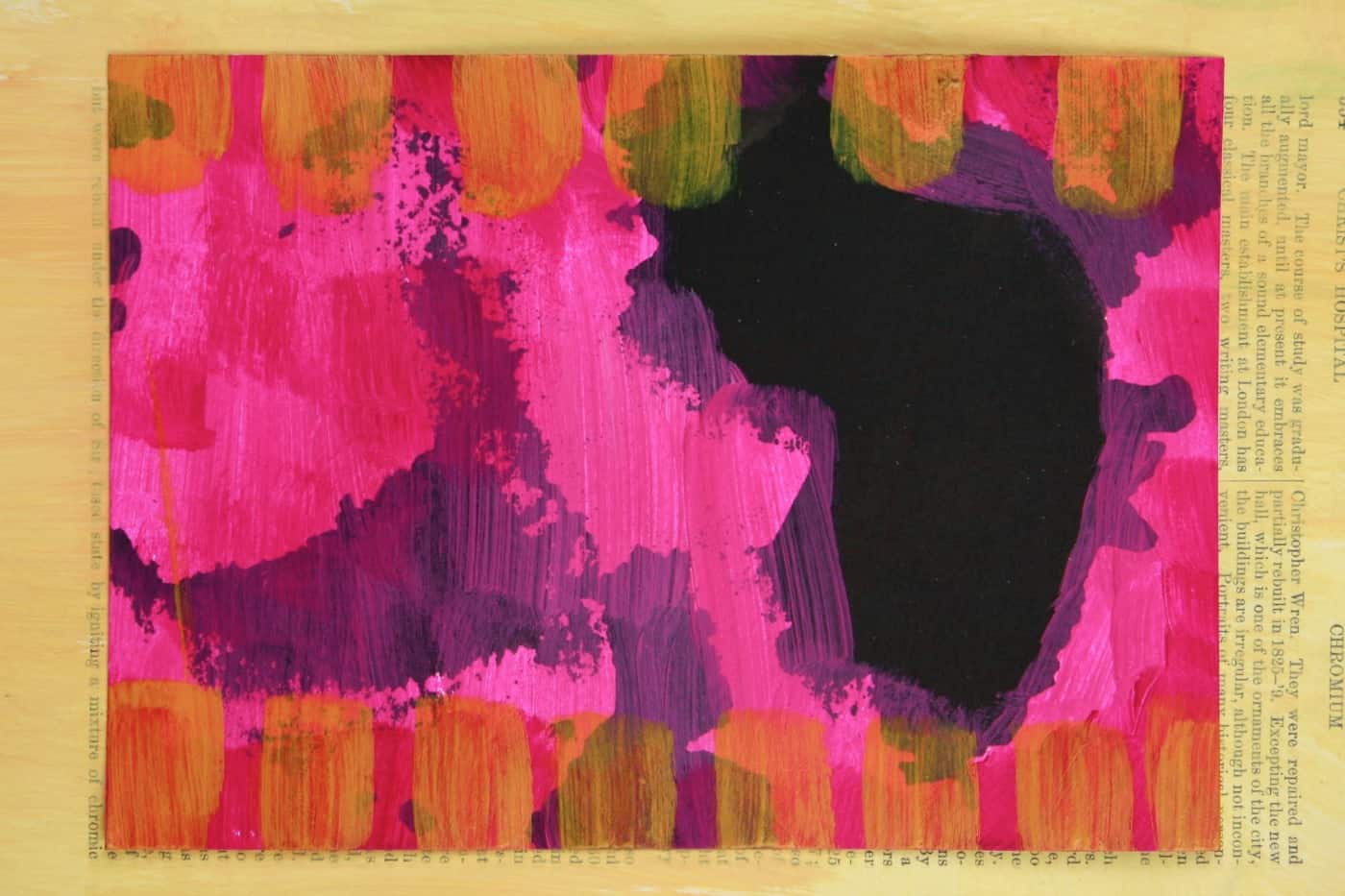
This thing was an ink drawing I did by pouring a bit of ink on the paper, and tilting the paper around to let the ink travel. I let it dry, then painted on pink washes of fluid acrylic mixed with some fluid medium, then added the golden yellow washes after the pink had dried.
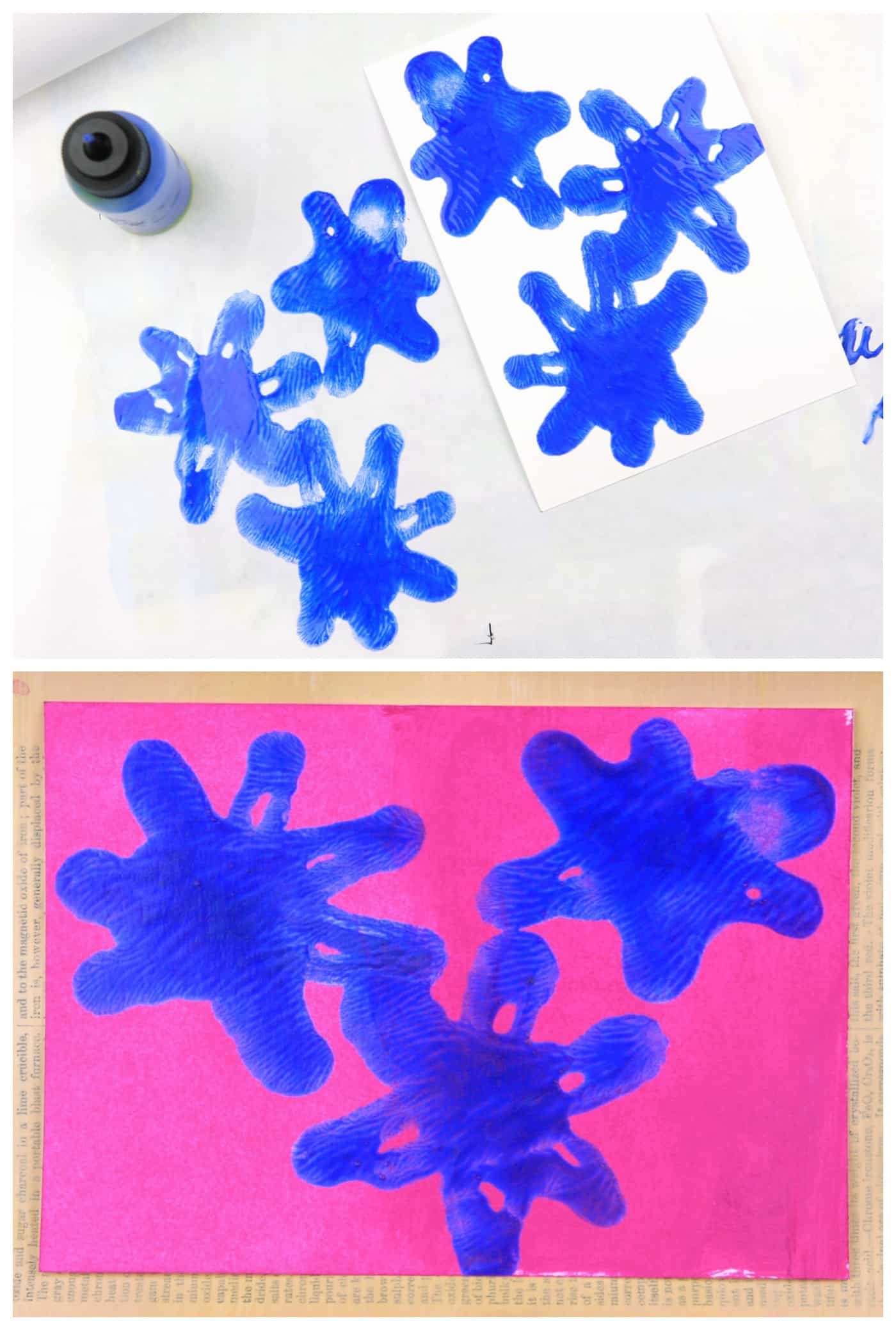
I used a squeeze bottle to draw little flower-star shapes on my freezer paper and pressed a small piece of paper on top of them to make a monoprint. When that had dried, I painted over everything with fluid acrylic, then wiped it off and it stuck just to the background paper.
Impasto Painting With Acrylic
Yes! One of the most wonderful ways to use acrylic paints is thick and goopy, without thinning it or diluting it with anything.

This is a layer of beige paint strokes over a dried green background. While the beige was still wet, I mixed some pink and painted right over the beige strokes. They sort of mixed, sort of didn’t, but it’s all thick, textured paint.
Here’s impasto to the extreme, with layers of gorgeous colors palette-knived onto a small surface. It’s fun to watch:
You don’t have to go that crazy, though. Try using a palette knife to paint with, and use loose strokes to make the semblance of your subject matter, or even go totally abstract.
How do you like this extreme close-up of an eye painted by Van Gogh? That’s impasto, baby. See it all on Google Arts & Culture.

https://www.instagram.com/paulwright5194/
Artist Dena Tollefson uses palette knives and spoons, so try that approach, too!
Sgraffito and Other Texturizing
Sgraffito is scratching through the top layer of paint to reveal a lower layer, usually a contrasting color.
I made a few sgraffito trials before I settled on a couple I deemed okay to show you, probably because sgraffito is not my favorite technique.
This first little painting on a board was made by letting my first layer of a darker turquoise dry, and then dabbing on thick layers of lighter turquoise in a pattern and scratching away with an embossing tool.
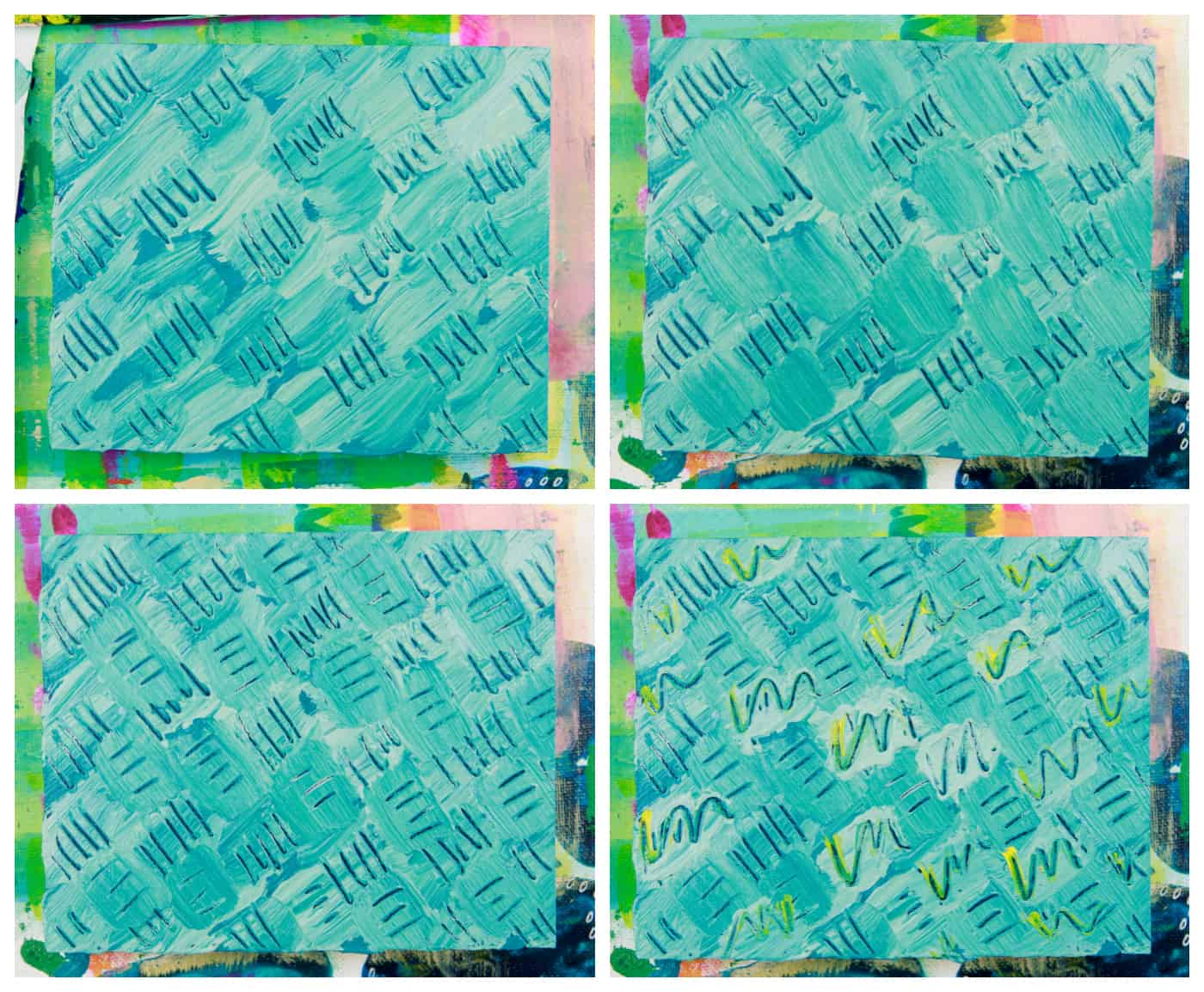
You can see the progression as I painted and drew lines and painted, and just had a generally fun time. I used a dumb embossing tool, so I would recommend something like this cheap set, which will quickly become that weird tool you never knew you would use so much.
This next little painting was texturized using a plastic bottle cap pressed into a thick layer of “I love this color”. That’s my new official name for it.
Then, instead of having the contrasting color under the lines, I painted a bit of yellow, let it dry, then dry brushed some darker blue over all of it. See how it skips right over the cap lines?

Paint Scraping
This is a basic version of the paint scraping technique you can do with acrylic. You just dab blobs of different colors of acrylic paint next to each other on a surface, and then drag a flat-edge tool over them and across your painting surface.
In this case, I mixed up some greens and yellows, blobbed them on a piece of bristol paper, and scraped them with a plastic putty scraper. You end up having lots of paint left on the scraper, so make sure you have some extra pieces of paper or cardstock laying around to scrape the paint onto.
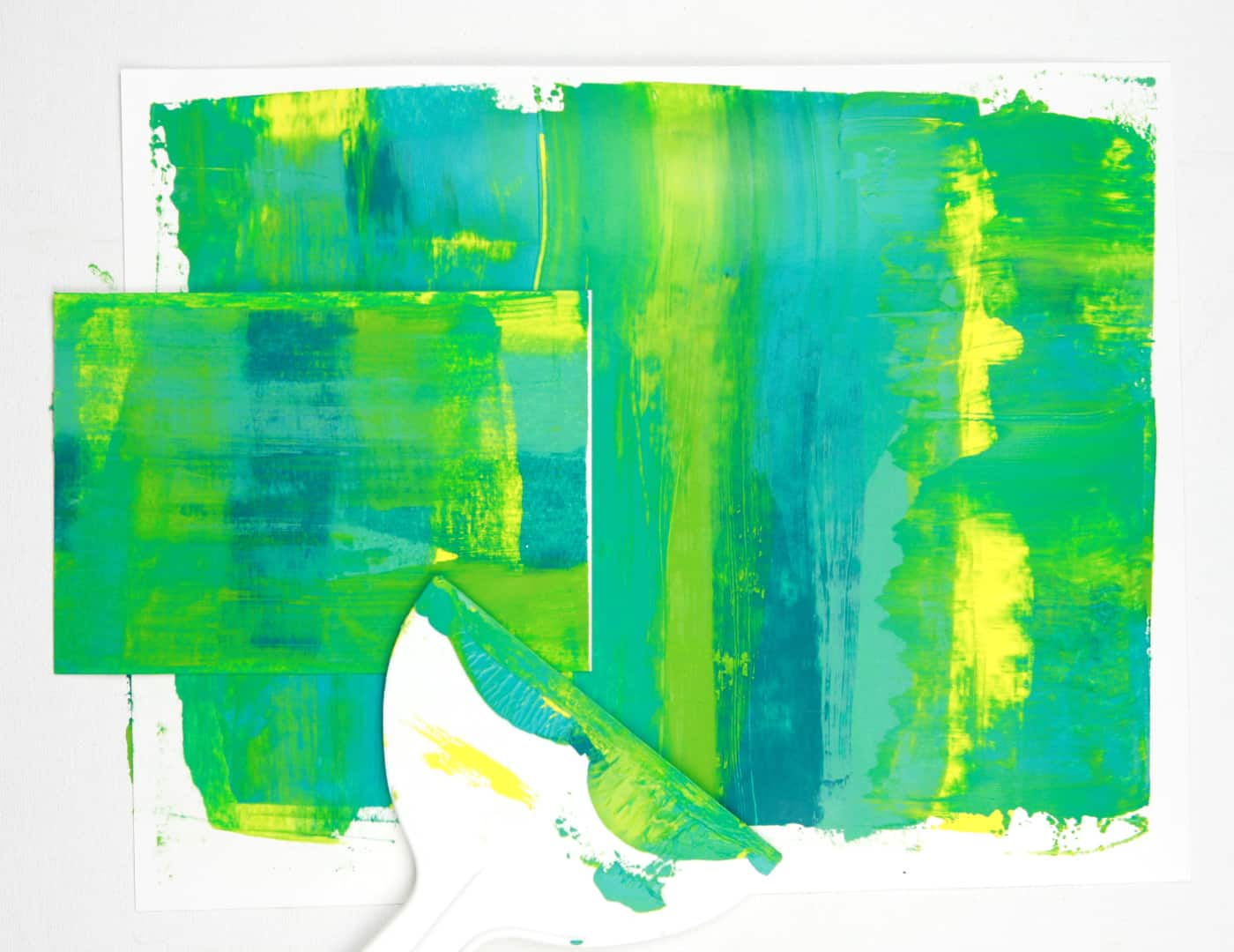
I’m going to do something fantastic to that small piece and send it to someone as a postcard.
I scraped across and then back and forth a few times, but you can keep it simple and graphic and scrape the colors across just once (try rainbow colors).
(Add more scraping)
Thick, Straight-Up Paint
Acrylic’s plasticky-ness when it dries lends itself perfectly to painting in thick layers, or even using as dried pieces to collage. You can see more about making acrylic skins here, but I had to include this masterpiece by my daughter who wanders up to my studio sometimes in search of paint to peel. She’s obsessed.
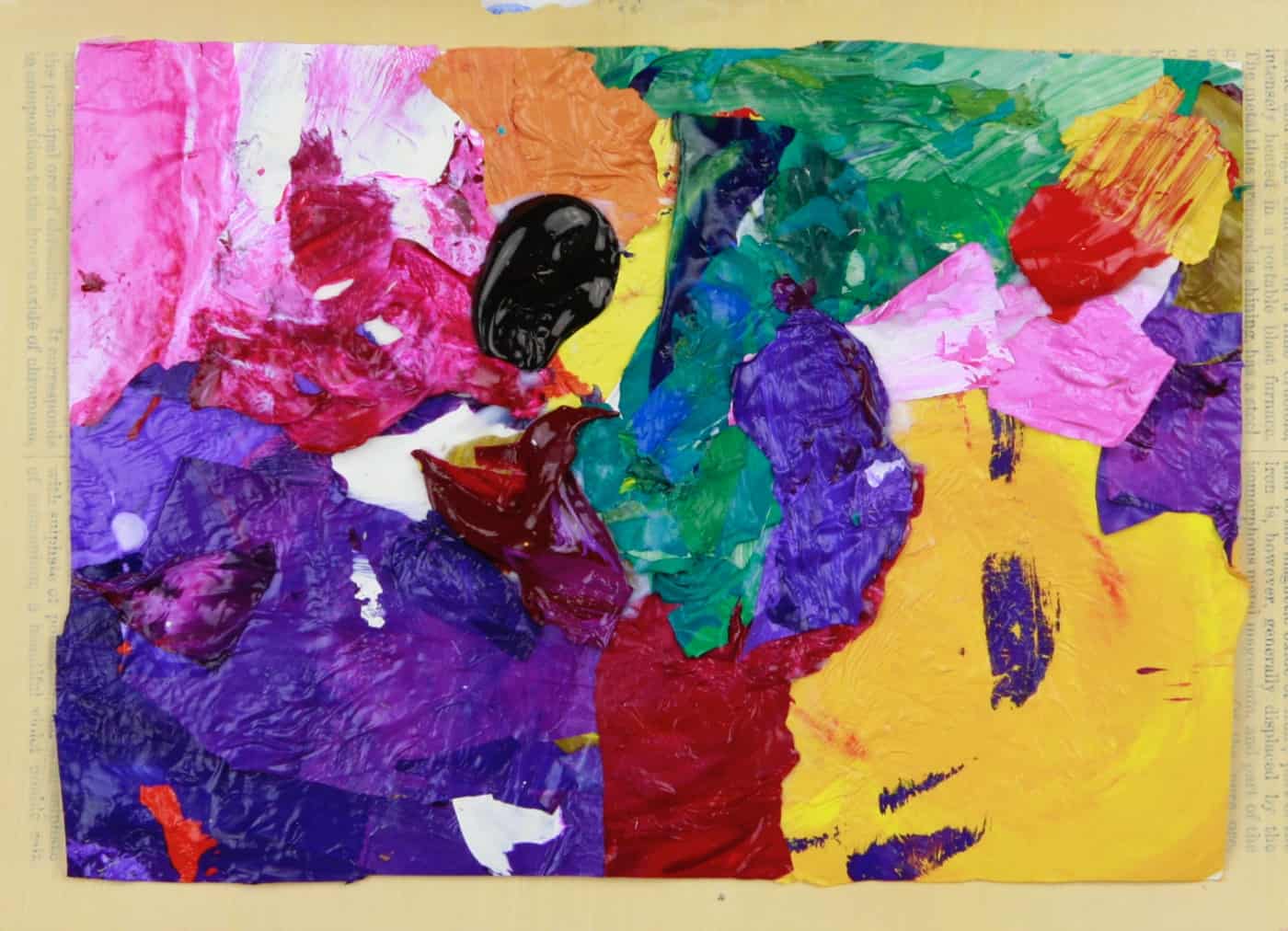
This next one is just daubs of paint, added on with a paintbrush, mostly letting the first layer dry. You could go on like this for layers and layers.
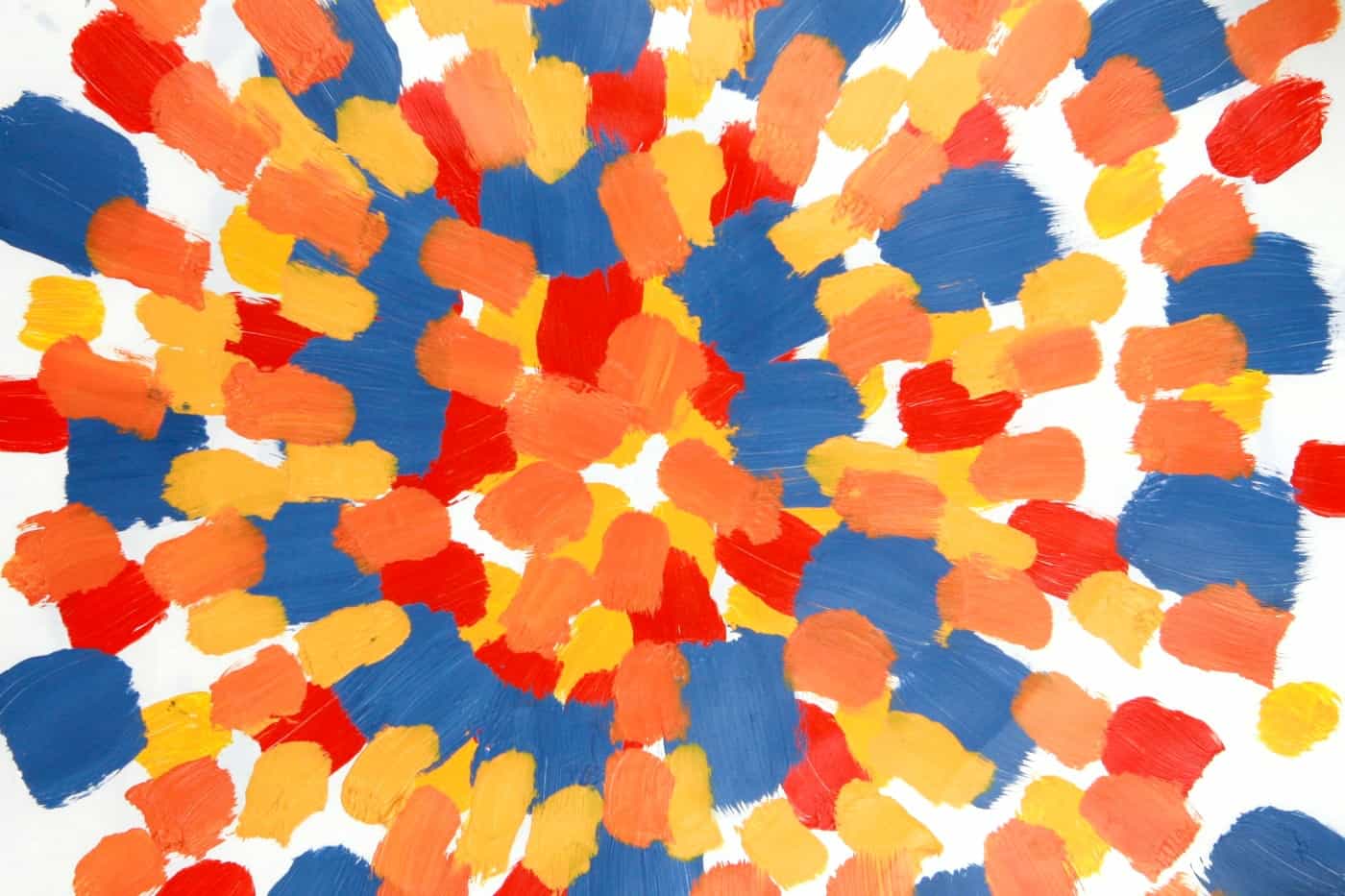
Then we have acrylic paint, mixed into whatever colors, brushed on without any water or medium or anything at all. If you haven’t experienced painting with straight acrylic paints, you haven’t lived.

Collage with painted acrylic papers
Well, look what else you can do with acrylic paints. You can paint and stain papers, cut or rip them up, and make collages with them.
Acrylic Monoprints
Brayer Rolling paint over itself in layers let dry in between
Fluid acrylics painted on and big alcohol drips dropped on (see the youtube video some woman did)
Watered paint on tissue paper like eric carle
redo glazing and washes – show layered, get rid of plaid or do another plaid – do a plaid in pink and yellow again, but with different thicknesses of lines and let them dry in between
Swirl wet-in wet acrylics with end of paint brush
Try the masking tape lifting technique in the art effects book image with half masking tap lift and half paper towel
Press something into thick paint for texture – not just a solid color paint
Redo finger paint image
redo 2 oil pastel drawings
Redo white drawn over acrylic and pencil over acrylic
do a cool pattern with frisket
do another stencil over some washes – or part stencil edging into the side of a painting
Take my other book page and do some pretty pink and turquoise? loose painting or scraping over it in areas
SHE’S RANKING: https://artjournalist.com/acrylic-painting-techniques/
acrylic painting inspiration
easy acrylic painting ideas for beginners
acrylic painting ideas abstract
Now that you’re as obsessed with acrylic painting techniques as I am, you’ll love these other projects using acrylics:
Mini round book project for kids
acrylic painting ideas inspiration – maybe add a section with inspiration from other artists
https://www.pinterest.com/rachellekearnsfineart/
https://www.saatchiart.com/paintings/acrylic
Comments
0 comments

